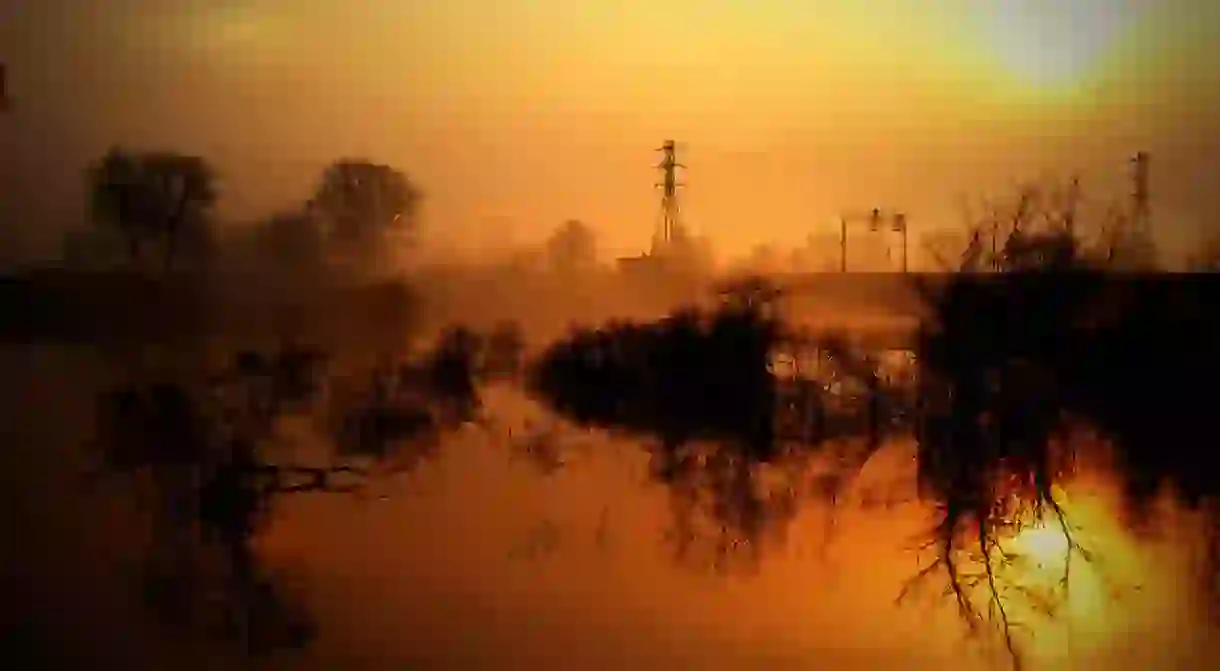The Top Things To Do And See In Daugavpils, Latvia

Daugavpils is a waterside city in south-eastern Latvia that boasts ruggedly handsome and dramatic landscapes. Rolling hills and captivating fortresses can be found in the area, as well as a wealth of charming red-brick buildings modelled in a German style. This is an underrated, idyllic region of Eastern European that is yet to play host to the hordes of tourists that are attracted to other parts of the Baltic states; here’s our guide to the top things to do and see while here.

Explore the history
The area around Daugavpils has been inhabited for centuries. It was founded by the maurading Muscovite ‘Ivan the Terrible’, who sacked the nearby fortress of Dünaburg to construct a Livonian-style fortress, a site that later flourished into Daugavpils. The town has been an important garrison area for successive rulers ever since, and a walk around the verdant greenery here exposes old castle ramparts and the remains of old fortresses to intrepid adventurers.

Practice Russian
The dramatic landscape of Daugavpils actually boasts more Russian roots than Latvian. Mass migration and job shortages following the First World War saw migrant Russian workers setting up homes in the town, a community that was enlargened and expanded over the years until Russian became the most prominent language of the region. Even today, Latvian remains only the second-widest spoken language in the town, with over 90 per cent of local inhabitants speaking Russian as their mother tongue.

Study the architecture
Latvian architecture is a stunning blend of Viennese sophistication and Parisian accurracy. In Daugavpils visitors will see beautifully colored buildings showcasing a pale aesthetic reminiscent of Barcelona, as well as a plethora of red brick, elegant constructs that combine to create one of the most charming architectural landscapes in Europe. A visit here should definitely incorporate a saunter down the main strip to see the bright, towering structures that line the walkway, many of which are attractively restored, sophisticated apartment blocks.
Go to a Museum
A great way to learn more about Daugvapils’ culture is by visiting the Daugavpils Museum of Regional History and Art. Founded in 1938, the museum is lined with wonderful historical displays, showcasing colorful examples of local costumes. There is also a section on the second floor here dedicated to Mark Rothko, arguably the most famous artistic figure to call Daugvapils his hometown, and the museum houses several reproductions that illuminate the life and works of the abstract artist.

Learn about Mark Rothko
Mark Rothko was one of the most influential painters of the 20th century, and was a founding leader of the abstract expressionist movement. He changed the conception of the canvas and created some 836 paintings, some of which are worth millions today. Although he moved from his native Latvia to the USA when he was 10, the artist always nurtured a connection to his Baltic heritage. Following his overwhelming success, Daugavpils erected a monument in his honor in 2003, a construct designed by Romaulds Gibovskis that incoporates themes from the artist’s oeuvre. To learn more about Mark Rothko, and to view some of his work, take a trip to the Mark Rothko Arts Centre, a multifunctional art, culture and education center dedicated to preserving his memory.

Go to a cathedral
Dominating the high ground just east of the center of Daugavpils is the Orthodox Cathedral of SS Boris and Gleb, a magnificent example of 19th-century Muscovite exuberance. Featuring shiny domes that appear to be impaled on spikes of lilac, the building is one of the most eye-catching and majestic in the city. And it is a historical place, too; it was here where Russian armies marched into town on the feast day of Boris and Gleb in 1656. In honor of their victory the army renamed the cathedral Borisoglebsk, and the religious site has been emblematic of Russian culture ever since.

Go to the citadel
Although the Citadel Cietoksnis is undergoing extensive renovations, it is still a site with a rich history worth engaging with. The building operated as the town center until 1770 when when it was captured by Tsarist Russian authorities and turned into a military stronghold. The citadel was again captured by Napoleanic troops in 1812, and after the Second World War it was turned into an Aviation High School. It is an eerie place, with crumbling walls and a garrison outpost which has survived most of the turbulence of its past. Surrounded by lush greenery, the peeling grey buildings juxtapose with the encompassing nature and illustrate the natural beauty and Soviet history of Daugavpils.














